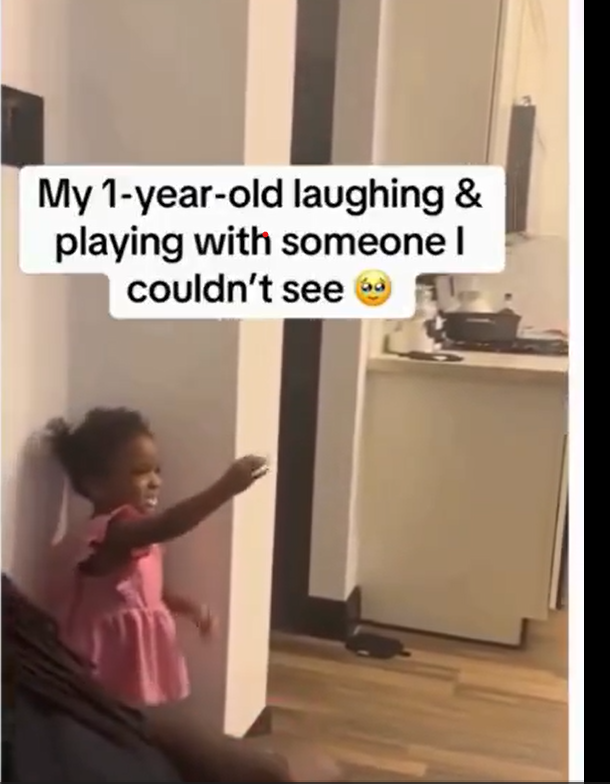A recent viral video showing a one-year-old girl appearing to play with an unseen presence has sparked a flurry of reactions online, dividing viewers between psychological insight and spiritual concern.
In the video, uploaded by her family, the toddler is seen laughing and gesturing toward what appears to be empty space. Her parents, visibly unsettled, can be heard questioning the strange interaction, prompting concern and speculation about what—or who—the child might be seeing.
Experts in developmental psychology, however, offer a grounded explanation. Studies by researchers like Marjorie Taylor at the University of Oregon suggest that about 37% of children by age seven develop imaginary companions, which often play a role in nurturing cognitive and social skills. These “invisible friends” are considered a normal part of childhood development and often reflect a child’s growing imagination and grasp of social dynamics.
Yet, the mother’s response marked by visible concern and a whispered plea for divine protection highlights a contrasting cultural interpretation. In many societies, such behavior may be linked to spiritual or supernatural phenomena, especially when exhibited by very young children. The idea that infants may possess a heightened spiritual sensitivity is deeply rooted in certain traditions.
This incident also brings attention to key developmental milestones. At this stage, toddlers begin to develop object permanence—the understanding that things exist even when out of sight and independent play, which encourages autonomy and problem-solving. These behaviors, while developmentally healthy, can sometimes be misinterpreted when they involve unseen interactions.
The video has ignited a broader conversation around parenting, belief systems, and the thin line between normal childhood behavior and the unexplained. Whether seen through the lens of science or spirituality, one thing is clear: children continue to fascinate us with their ability to blur the boundaries between the real and the imagined.

